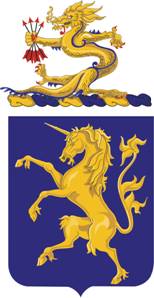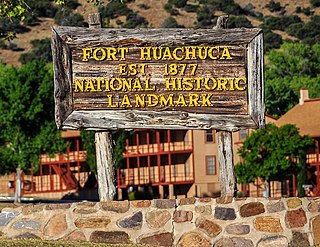Related Research Articles

Geronimo was a military leader and medicine man from the Bedonkohe band of the Ndendahe Apache people. From 1850 to 1886, Geronimo joined with members of three other Central Apache bands – the Tchihende, the Tsokanende and the Nednhi – to carry out numerous raids, as well as fight against Mexican and U.S. military campaigns in the northern Mexico states of Chihuahua and Sonora and in the southwestern American territories of New Mexico and Arizona.

Cochise was the leader of the Chiricahui local group of the Chokonen and principal nantan of the Chokonen band of a Chiricahua Apache. A key war leader during the Apache Wars, he led an uprising that began in 1861 and persisted until a peace treaty was negotiated in 1872. Cochise County is named after him.

George R. Crook was a career United States Army officer who served in the American Civil War and the Indian Wars. He is best known for commanding U.S. forces in the 1886 campaign that led to the defeat of the Apache leader Geronimo. As a result, the Apache nicknamed Crook Nantan Lupan, which means "Grey Wolf."

Broken Arrow is a 1950 American Western film directed by Delmer Daves and starring James Stewart, Jeff Chandler and Debra Paget. The film is based on historical figures, but fictionalizes their story in dramatized form. It was nominated for three Academy Awards, and won a Golden Globe Award for Best Film Promoting International Understanding. Film historians have said that the film was one of the first major Westerns since the Second World War to portray the Indians sympathetically.

Victorio was a warrior and chief of the Warm Springs band of the Tchihendeh division of the central Apaches in what is now the American states of Texas, New Mexico, Arizona, and the Mexican states of Sonora and Chihuahua.

The Apache Wars were a series of armed conflicts between the United States Army and various Apache tribal confederations fought in the southwest between 1849 and 1886, though minor hostilities continued until as late as 1924. After the Mexican–American War in 1846, the United States inherited conflicted territory from Mexico which was the home of both settlers and Apache tribes. Conflicts continued as new United States citizens came into traditional Apache lands to raise livestock and crops and to mine minerals.
Lozen was a warrior and prophet of the Chihenne Chiricahua Apache. She was the sister of Victorio, a prominent chief. Born into the Chihenne band during the 1840s, Lozen was, according to legends, able to use her powers in battle to learn the movements of the enemy. According to James Kaywaykla, Victorio introduced her to Nana, "Lozen is my right hand ... strong as a man, braver than most, and cunning in strategy. Lozen is a shield to her people".

Emmet Crawford was an American soldier who rose through the ranks to become an officer. He was most noted for his time spent in the Arizona Territory under General George Crook in the United States Cavalry. He was killed in pursuit of the Apache leader Geronimo in January 1886 in Mexico.

Geronimo: An American Legend is a 1993 historical Western film starring Wes Studi, Jason Patric, Gene Hackman, Robert Duvall, and Matt Damon in an early role. The film, which was directed by Walter Hill, is based on a screenplay by John Milius. It is a fictionalized account of the Apache Wars and how First Lieutenant Charles B. Gatewood convinced Apache leader Geronimo to surrender in 1886.

The 6th Cavalry is a regiment of the United States Army that began as a regiment of cavalry in the American Civil War. It currently is organized into aviation squadrons that are assigned to several different combat aviation brigades.

The Apache Scouts were part of the United States Army Indian Scouts. Most of their service was during the Apache Wars, between 1849 and 1886, though the last scout retired in 1947. The Apache scouts were the eyes and ears of the United States military and sometimes the cultural translators for the various Apache bands and the Americans. Apache scouts also served in the Navajo War, the Yavapai War, the Mexican Border War and they saw stateside duty during World War II. There has been a great deal written about Apache scouts, both as part of United States Army reports from the field and more colorful accounts written after the events by non-Apaches in newspapers and books. Men such as Al Sieber and Tom Horn were sometimes the commanding officers of small groups of Apache Scouts. As was the custom in the United States military, scouts were generally enlisted with Anglo nicknames or single names. Many Apache Scouts received citations for bravery.

The Bascom Massacre was a confrontation between Apache Indians and the United States Army under Lt. George Nicholas Bascom in the Arizona Territory in early 1861. It has been considered to have directly precipitated the decades-long Apache Wars between the United States and several tribes in the southwestern United States. War was coming with the Chiricahua Apache. The affair led to an open break and open hostilities, but Cochise had not previously been peaceful, he had been prudent and avoided raiding Americans. He had, however, stolen livestock from the Overland Mail, from Fort Buchanan and had twice been forced to return stolen stock by Capt. Richard S. Ewell, who swore that if he had to deal with Cochise again, he would strike a blow.

Al Sieber was a German-American who fought in the U.S Civil War and in the American Old West against Indians. He became a prospector and later served as a Chief of Scouts during the Apache Wars.

Mr. Horn is a 1979 American Western miniseries based on Tom Horn's writings, starring David Carradine. It was directed by Jack Starrett from a screenplay by William Goldman. This version came out just prior to the 1980 feature film Tom Horn, which starred Steve McQueen.

The Battle of Big Dry Wash was fought on July 17, 1882, between troops of the United States Army's 3rd Cavalry Regiment and 6th Cavalry Regiment and members of the White Mountain Apache tribe.The location of the battle was called "Big Dry Wash" in Major Evans' official report, but later maps called the location "Big Dry Fork", which is how it is cited in the four Medal of Honor citations that resulted from the battle.

The Battle of Cibecue Creek was an engagement of the Apache Wars, fought in August 1881 between the United States and White Mountain Apaches in Arizona, at Cibecue Creek on the Fort Apache Indian Reservation. After an army expedition of scouts, U.S. Army soldiers 'arrested' a prominent Cibecue Apache medicine man named Nock-ay-det-klinne. The U.S. Army soldiers were taking Nock-ay-det-klinne back to the fort when they were ambushed by Apache warriors. During the conflict, the U.S. Army soldiers killed Nock-ay-det-klinne. Most of the 23 Apache scouts mutinied, in the largest such action of its kind in U.S. history. The soldiers retreated to Fort Apache. The following day, the White Mountain Apache mounted a counter-attack. The events sparked general unrest and led to White Mountain Apache warriors leaving the Fort Apache Indian Reservation to join forces with the Apache leader of the Bedonkohe band of Chiricahua Apache named Goyahkla, better known as Geronimo.

The Battle of Fort Apache was an engagement of the Apache Wars between the cavalry garrison of Fort Apache and dozens of mounted White Mountain Apache warriors. The battle occurred in eastern Arizona Territory on September 1, 1881.

First Lieutenant Charles Bare Gatewood was an American soldier born in Woodstock, Virginia. He served in the United States Army in the 6th Cavalry after graduating from West Point. Upon assignment to the American Southwest, Gatewood led platoons of Apache and Navajo scouts against renegades during the Apache Wars. In 1886, he played a key role in ending the Geronimo Campaign by persuading Geronimo to surrender to the army. Beset with health problems due to exposure in the Southwest and Dakotas, Gatewood was critically injured in the Johnson County War and retired from the Army in 1895, dying a year later from stomach cancer. Before his retirement he was nominated for the Medal of Honor, but was denied the award. He was portrayed by Jason Patric in the 1993 film Geronimo: An American Legend.
The Battle of Devil's Creek was a military engagement during Geronimo's War, fought on May 22, 1885 near Alma, New Mexico. Though it was a minor skirmish, it was the first battle of the Geronimo campaign and ended after the Apaches were routed from their positions.

This is a list with images of some of the historic structures and places in the Fort Huachuca National Historic District in Arizona. The district, also known as Old Fort Huachuca, is located within Fort Huachuca an active United States Army installation under the command of the United States Army Installation Management Command. The fort sits at the base of the Huachuca Mountains four miles west of the town of Sierra Vista, on AZ 90 in Cochise County, Arizona.
References
- 1 2 "Watch for Me on the Mountain". Kirkus Reviews . September 1, 1978. Retrieved January 1, 2024.
- ↑ The Southern Albatross: Race and Ethnicity in the American South. Mercer University Press. 1999. p. 258. ISBN 0-86554-666-5.
- ↑ Clements, William M. (2013). Imagining Geronimo: An Apache Icon in Popular Culture. University of New Mexico Press. pp. 233–235. ISBN 978-0-8263-5322-1.
- 1 2 Schott, Webster (March 18, 1979). "Teton Sioux and Other Indians". The New York Times . Archived from the original on January 1, 2024. Retrieved January 1, 2024.
- ↑ Rubin, Dana (February 1992). "The Real Education of Little Tree". Texas Monthly . Archived from the original on December 15, 2023. Retrieved January 1, 2024.